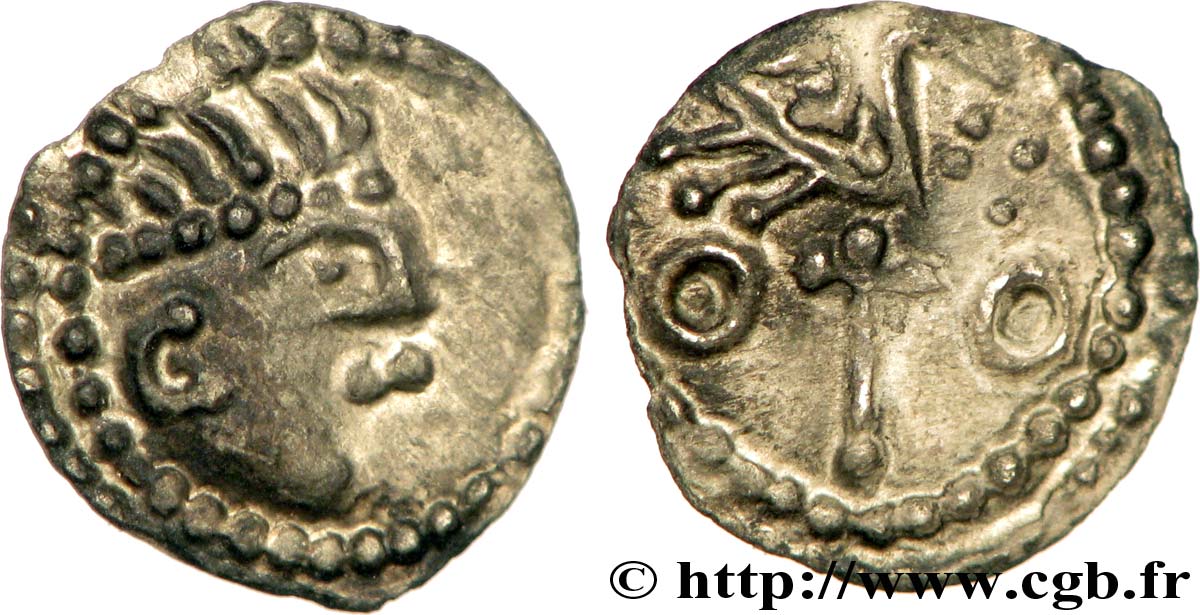E-auction 191-122324 - bmv_242668 - ENGLAND - ANGLO-SAXONS Sceat à l’oiseau posé sur la croix, Série J, type 85
You must signin and be an approved bidder to bid, LOGIN TO BID. Accounts are subject to approval and the approval process takes place within 48 hours. Do not wait until the day a sale closes to register. Clicking on « bid » constitutes acceptance of the terms of use of cgb.fr private e-auctions.
Bids must be placed in whole Euro amounts only. The sale will start closing at the time stated on the item description; any bids received at the site after the closing time will not be executed. Transmission times may vary and bids could be rejected if you wait until the last second. For further information ckeck the E-auctions F.A.Q.
NO BUYER'S FEE.
NO BUYER'S FEE.
| Estimate : | 220 € |
| Price : | 78 € |
| Maximum bid : | 81 € |
| End of the sale : | 12 December 2016 14:54:00 |
| bidders : | 11 bidders |
Type : Sceat à l’oiseau posé sur la croix, Série J, type 85
Date: c. 710-760
Mint name / Town : Angleterre (sud-est)
Metal : silver
Diameter : 11,5 mm
Orientation dies : 5 h.
Weight : 0,58 g.
Rarity : R1
Coments on the condition:
Monnaie sur un flan un peu court. Droit complet et centré et revers légèrement décentré. Frappe vigoureuse avec une patine en nuances de gris. Bel aspect avec le brillant de frappe, malgré un métal un peu cristallisé
Catalogue references :
Predigree :
ex VSO 45, n° 1007
Obverse
Obverse legend : ANÉPIGRAPHE.
Obverse description : Tête à droite dans un grènetis, un bandeau perlé dans les cheveux.
Reverse
Reverse legend : ANÉPIGRAPHE.
Reverse description : Croix entre deux annelets pointés, sommée d’un oiseau à droite, avec trois petits globules sous son bec ; le tout dans un double grènetis.
Commentary
Cet exemplaire est exactement du même type que les B350 et J110 publiés par T. Abramson, ou encore que le n° 695 de Cambridge.
Bien que sur un flan large, ce type est anépigraphe, avec un grènetis des deux côtés, mais aucune légende autour. Associée au style, cette caractéristique permet de distinguer les deux groupes de monnaies, pourtant aux mêmes types de droit et de revers !.
Bien que sur un flan large, ce type est anépigraphe, avec un grènetis des deux côtés, mais aucune légende autour. Associée au style, cette caractéristique permet de distinguer les deux groupes de monnaies, pourtant aux mêmes types de droit et de revers !.








 Report a mistake
Report a mistake Print the page
Print the page Share my selection
Share my selection Ask a question
Ask a question Consign / sell
Consign / sell
 Full data
Full data









